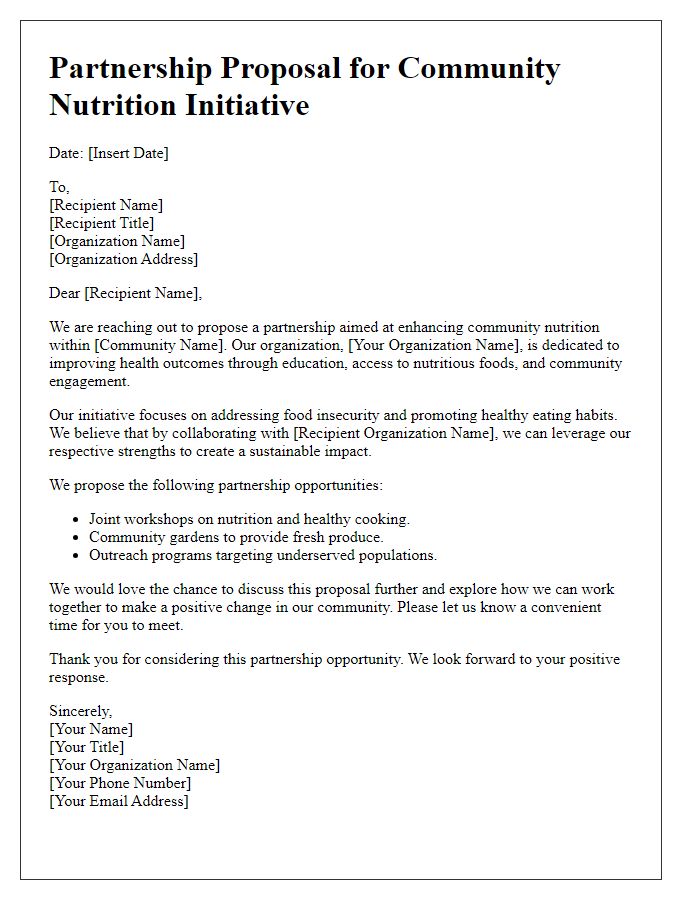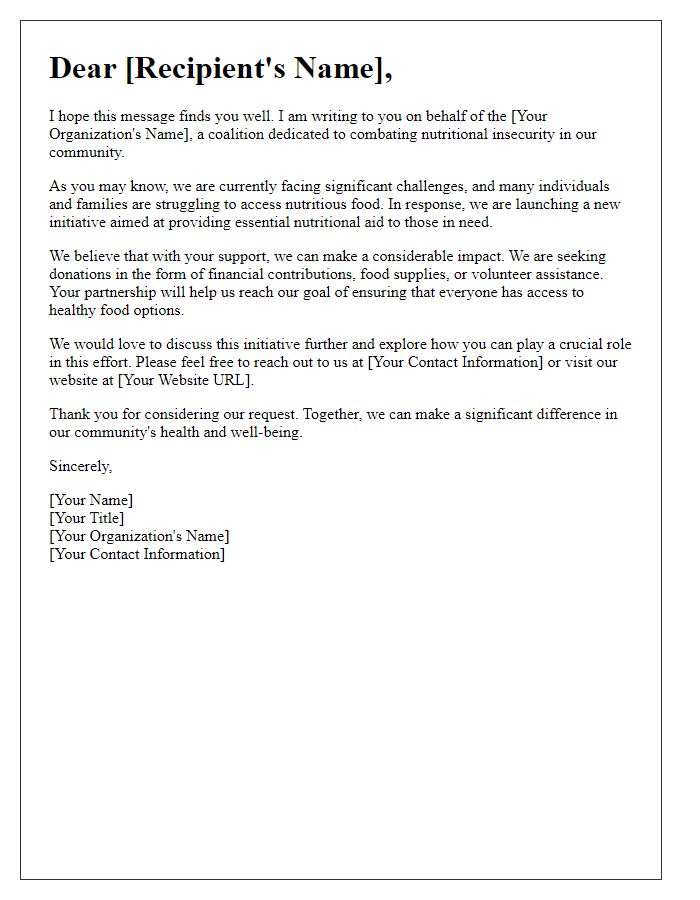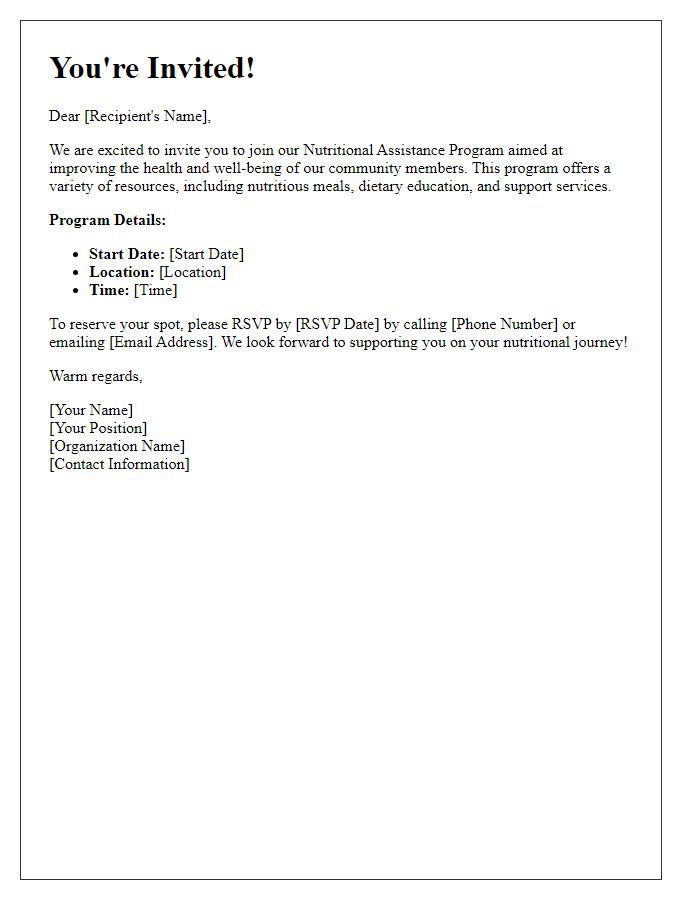Are you passionate about improving community health? If you're looking to collaborate on a nutritional aid program that makes a real difference, you're in the right place! We believe that working together can amplify our impact and help us reach more individuals in need. Join us in discovering innovative ways to support those striving for better nutrition â read more to find out how you can get involved!

Recipient Identification
The Nutritional Aid Program seeks collaboration with local community organizations committed to improving food security. Targeted recipients include low-income families residing in urban areas, particularly those living below the poverty line defined by the U.S. Census Bureau (in 2022, approximately 11.4% of the population). The program aims to identify individuals facing food scarcity, including children, elderly, and individuals with disabilities, focusing on metropolitan regions such as Chicago, Los Angeles, and New York City. By collaborating with food banks, schools, and healthcare providers, the program plans to gather data on recipient demographics, dietary needs, and access to resources, ensuring an effective and impactful distribution of nutritional support.
Program Overview
A nutritional aid program serves to combat food insecurity and enhance overall community health by providing essential dietary resources to individuals and families in need. Programs typically operate in urban areas like Los Angeles and rural regions such as Appalachia, serving populations with limited access to nutritious food options. Key components of these programs include partnerships with local food banks, distribution of fresh produce, and educational workshops focusing on healthy eating habits. Statistics reveal that approximately 37 million Americans, including 11 million children, faced hunger in 2020, highlighting an urgent need for collaboration among nonprofits, government agencies, and community organizations. Evaluation metrics often include the number of meals distributed, participant engagement levels, and improvements in local health outcomes, emphasizing the importance of ongoing support to maximize impact.
Mutual Benefits
The collaboration between local farms (community support farms) and nutritional aid programs (food assistance initiatives) can significantly enhance food security for underserved populations. By providing fresh produce (fruits and vegetables), local farms ensure high nutritional value, addressing issues like obesity and malnutrition. Nutritional aid programs disseminate this food, reaching thousands of families who face economic challenges (e.g., poverty levels below $30,000 annually). Such partnerships not only bolster local economies (supporting over 200 small-scale farmers) but also promote sustainability (reducing carbon footprints linked to food transportation). Mutual benefits arise: farms gain increased sales and visibility, while aid programs enhance their ability to serve communities effectively, ultimately improving the overall health and well-being of participants.
Proposed Partnership Details
A proposed partnership between local health organizations and community food banks aims to combat food insecurity (affecting approximately 10.5% of households in the U.S.) and promote nutritional education. This initiative focuses on providing balanced meals and educational workshops across urban areas with high poverty rates, such as Detroit (with a poverty rate of 30% in certain neighborhoods). Collaboration will involve distributing fresh produce and whole grains, along with cooking classes designed to teach families about healthy eating habits. Target demographics include low-income households, particularly those with children under 18 years old (over 13 million children face food insecurity in the U.S. as of 2022). Evaluation metrics will include participant feedback, changes in dietary habits, and improved health outcomes over a six-month period. This partnership seeks to enhance community well-being, reduce health disparities, and empower individuals with knowledge about nutrition.
Contact Information
A nutritional aid program collaboration can significantly impact community health initiatives, involving various partners such as local food banks, healthcare organizations, and educational institutions. Effective communication of contact information is crucial to establish a network for resource sharing and implementation. Contact information typically includes email addresses, phone numbers, and physical addresses of program coordinators. In addition, social media links might facilitate broader outreach and engagement with the community. Maintaining updated records of these contacts (ensuring changes in personnel or roles do not disrupt communication flow) can streamline partnerships and facilitate rapid response to nutritional needs. Moreover, geographic locations of participating organizations, especially in urban areas like New York City or rural regions, shape the collaboration's reach and effectiveness, ensuring resources are accessible to those in need.
Letter Template For Nutritional Aid Program Collaboration Samples
Letter template of request for collaboration on nutrition support initiative

Letter template of partnership proposal for community nutrition initiative

Letter template of solicitation for support in nutritional aid coalition

Letter template of interest in collaborating on health nutrition programs










Comments